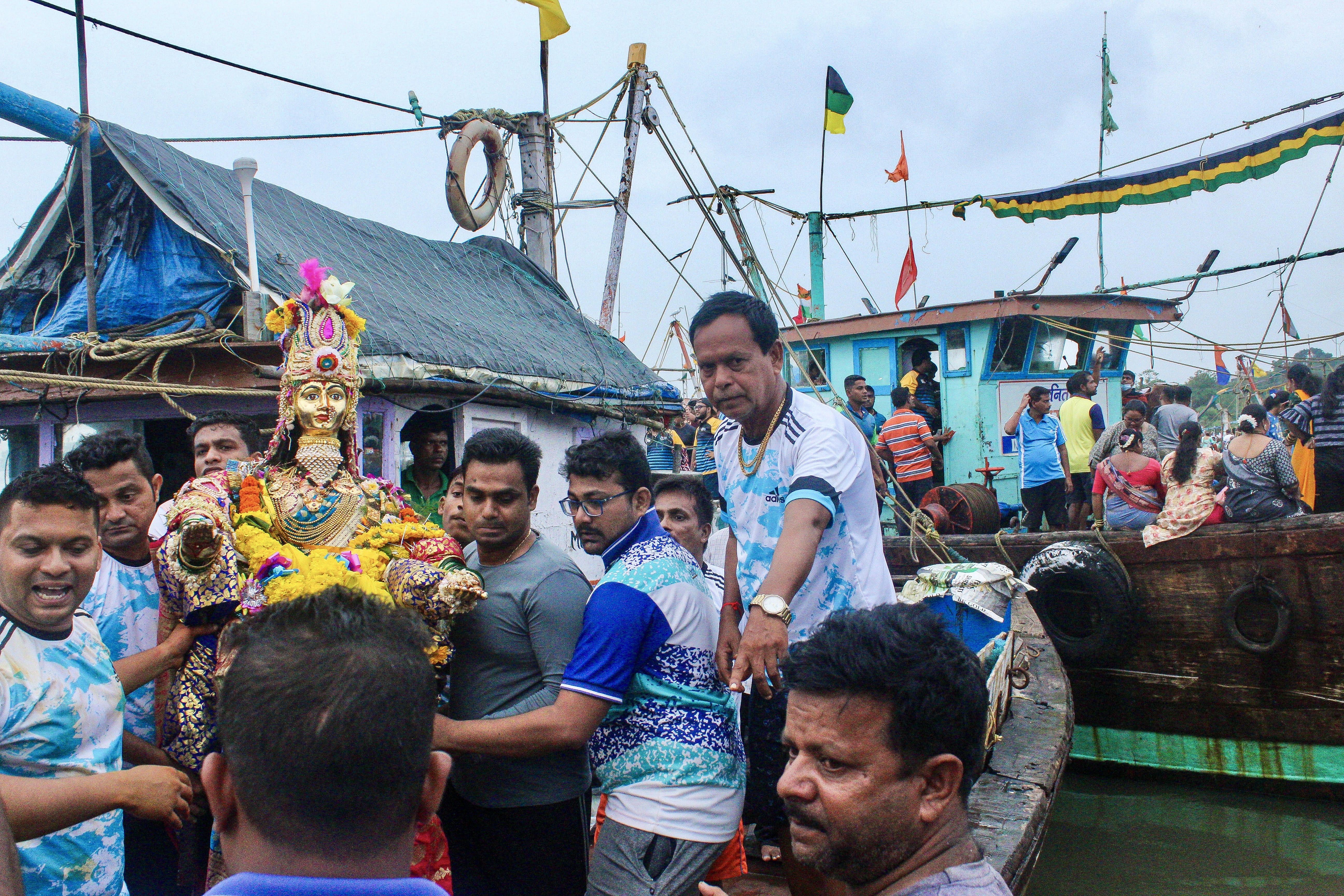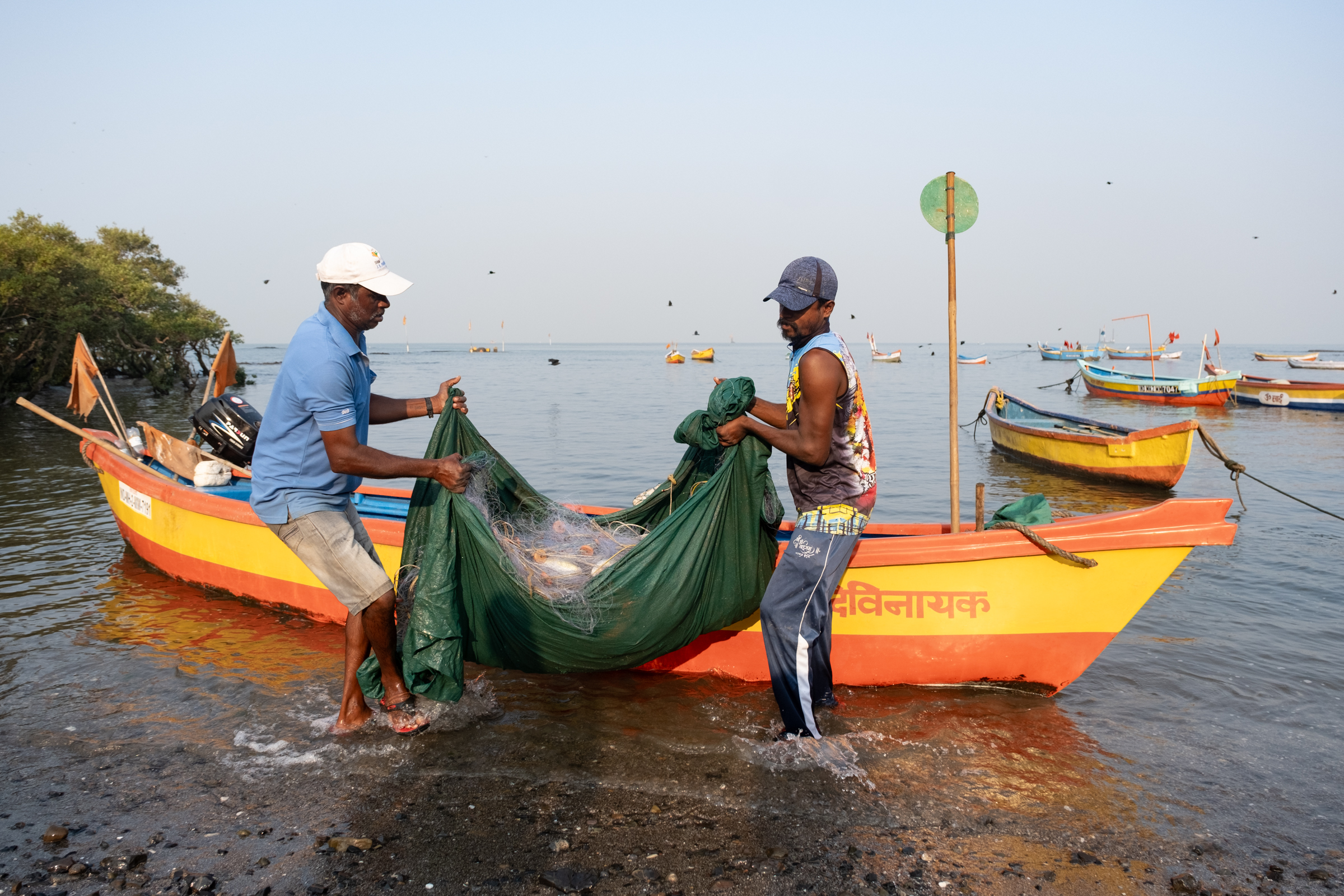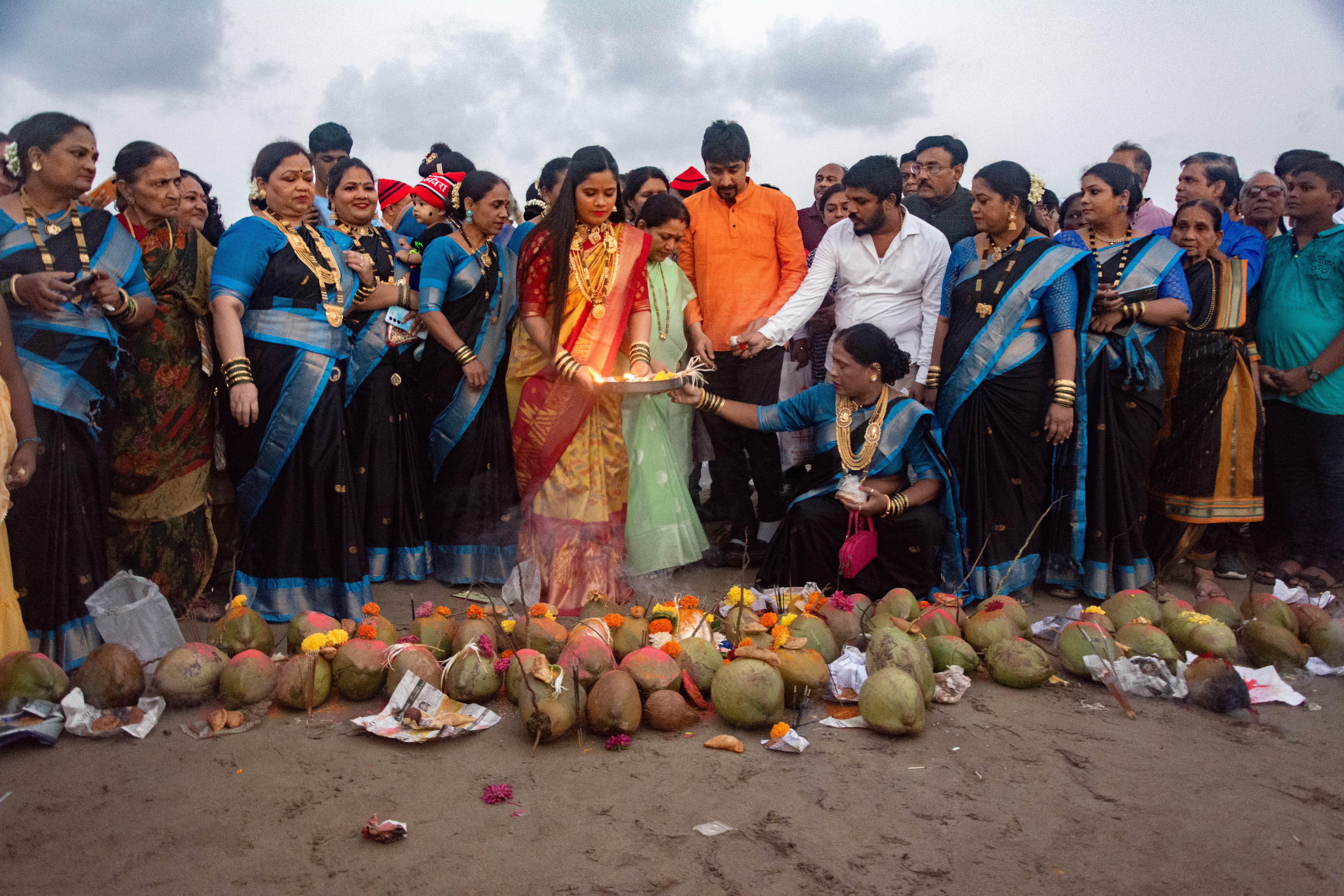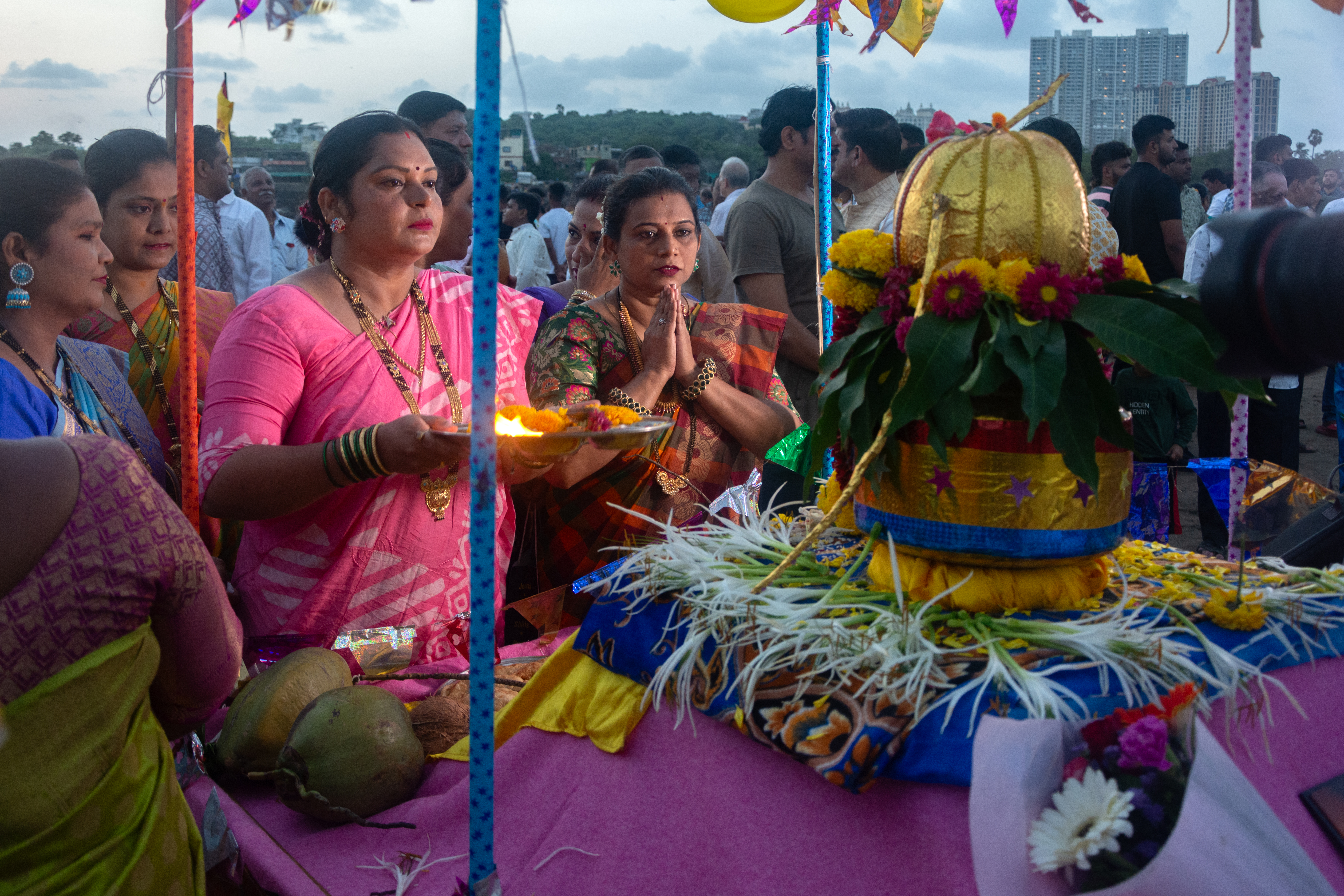The Kolis: An Introduction
Introduction
The Kolis are indigenous people living on the coasts of Mumbai and its neighbouring areas. We can simply understand the term 'indigenous peoples' as those who are native to the land and have inhabited the region since time immemorial. José Martinez Cobo, a Special Reporter of the United Nations (UN), provides a working definition for indigenous peoples, encompassing the definition of indigeneity at both the group and individual levels. However, the term lacks a universal definition due to challenges in defining someone as belonging to an indigenous community or being an indigenous person, owing to factors such as the history of colonisation, the process of assimilation, or the intricate laws governing membership in an indigenous community. International accords developed the notion of indigenous peoples, employing it as a construct for specific communities and populations in specific regions. [1]
Article 1 of the International Labour Organisation's (ILO) Convention No. 169 (Indigenous and Tribal People’s Convention) states that it applies to:
“(a) tribal peoples in independent countries whose social, cultural, and economic conditions distinguish them from other sections of the national community and whose status is regulated wholly or partially by their customs or traditions or by special laws or regulations;
(b) peoples in independent countries who are regarded as indigenous on account of their descent from the populations that inhabited the country or a geographical region to which the country belongs at the time of conquest, colonisation, or the establishment of present state boundaries and who, irrespective of their legal status, retain some or all of their own social, economic, cultural, and political institutions” [2].
The above description offers insight as to what can be understood by the term indigenous peoples.
Indigenous Communities in India
India, as a nation, is characterised more by its diversity than its similarities. Within this diverse land, there exist several indigenous populations whose cultural features have evolved with respect to the environment they inhabit. Each community possesses a distinct history, culture, and set of customs that define its identity and way of coexisting with the natural world and its particular surroundings. India is home to several indigenous groups and tribal communities spread across the country, preserving traditional knowledge passed down through generations. India has witnessed numerous stages of transition, especially in the pre- and post-colonial eras, which have profoundly influenced the country and its people. The continuous impact on the 'indigenousness' of communities has resulted in significant changes. Among the indigenous communities residing in India are the Santhals, Khasis, Bhils, Bodos, Garos, Meenas, and Gonds.
The Kolis – a historical account
For a person living in Mumbai, the term Koli often evokes images of the sea, fish, and fisherwomen. However, the term Koli is an umbrella term encompassing various communities that reside in the hinterlands and are not necessarily involved in fishing occupations. The general term ‘Kolis,’ which is used to refer to several communities, fails to capture the diversity of the range of vocations and phases of cultural development that exist among the different communities within the group.[3] Enthoven notes that for centuries, the term Koli has been used to refer to the majority of the indigenous residents of the Presidency (Bombay), who were members of a tribal organization. [4] The Kolis are an indigenous group inhabiting parts of Gujarat, the Northern Konkan, the Sahyadris, the Deccan, and other regions of the country.
In the Gujarat region, the Talabdas lived in significant numbers. The Son Kolis originally inhabited Bombay and its surrounding islands. The Raj Kolis resided in the Jawhar and North Konkan regions, while the Mahadev and Malhar Kolis were located in the Deccan region. The Kharvas and Agaris inhabited the Surat and Thana regions. Scholars have described the Dhudias, Chaudharis, Warlis, Katkaris, Dubalas, and Thakurs as offshoots of the Kolis. [5]
Enthoven mentions several endogamous divisions of the Kolis, which are as follows:
Agri, Ahir, Band, Bhil, Bhilave or Bhirale, Chanchi, Dhor or Tokre, Helmar, Kabber, Karade, Khar, Konkan, Kulparna, Mahadev/Dongar/Raj, Malhar/Kunum/Chumli/Pan/Panbhari, Maratha, Marvi, Mendale, Meta or Dhangar, Musale or Bhandu, Nehre, Rahtadkar, Shingtoki, Son, Solesi/Kashti/Lallangoti, Suryavanshi, Tankri, Tayade, Thankar/Christians, and Wali. [6]
Among the divisions mentioned above, the main groups, according to him, were the Malhar Kolis, the Mahadev Kolis, the Son Kolis, and the Dhor Kolis.
The Gujarat Kolis are made up of several endogamous groups, including the Thakardas, Chunwaliyas, Talabdas, Patanwadias, and Patelias. They primarily inhabit the regions of Surat, Ahmedabad, Palanpur, Mahikantha, Panchmahals, Kaira, and Baruch. [7]
From Mulshi in the southwest of Pune to Trimbak (Trimbakeshwar) near Nasik, the Mahadev Kolis inhabited the valleys on the east slopes of the Sahyadris. The Raj Kolis of Jawhar are believed to be part of the Mahadev Kolis. The Chief of the Jawhar State in North Konkan was a Mahadev Koli; this, along with their claimed Rajput ancestry, is likely what gives them the name ‘Raj.’ [8] Originally, people assumed that the Mahadev Kolis were infantrymen. Over time, they began working as labourers, husbandmen, and cattle owners. In certain locations, they work as boatmen during the rainy season, transporting travellers across rivers and streams. At Mahadev temples, some people serve as hereditary priests and accept the offerings made to God. In Kolhapur, the Mahadev Kolis catch and sell fish, as well as gather slake and lime nodules. Many of them own land, while others occupy it. [9]
The Malhar Kolis, also known as the Pan-bhari or the water-filling Kolis, share many similarities with the Mahadev Kolis. They are called Malhar Kolis, because they worship Malhar, a manifestation of Shiva. As implied by their name, Pan-bhari, which means water filler, their typical duties include cleaning the village rest house and office, as well as supplying water to both locals and visitors. They are also known as Kunum Kolis because, according to Captain Mackintosh of the Bombay Geographical Society, they associate and eat with Kunbis. The name Chumlis comes from the chumal (fabric fenders) they wear on their heads as water pot rests. They can be found throughout Bombay City, in nearly every village in the Deccan, and in the Thana district's seaside. The Malhar Kolis share the surnames Bhoir, Jadhav, Kerav, Langa, Povar, Sharanpad, Shelir, Sojval, and Vekhande. Their dialect, attire, traditions, and rituals are all the same as those of the Mahadev Kolis. [10]
The majority of Dhor Kolis, also known as Tokre Kolis, is located in northern Konkan. The word dhor means cattle; the Dhor Kolis consume beef, hence the name. The name Tokre originates from the word tokar, a type of bamboo, suggesting that their occupation involves cutting bamboo. [11]
The Son Kolis are Mumbai's original inhabitants. Enthoven notes in his book, The Tribes and Castes of Bombay, Vol. II, that the Son Kolis inhabit the North Konkan coast, stretching from Bassein (now Vasai) to Ratnagiri in the south. Doubt shrouds the question of how the Son Kolis came down to the coasts. Some opine that they emigrated from the hills a few hundred years ago. There is no known connection between the Son Kolis and the Gujarat Kolis, but they are open to the idea. Fishing is the traditional means of subsistence for the Son Kolis, and almost everyone who worked in the industry profited from the vocation. The government employed a tiny percentage of the Son Kolis as clerks or accountants, while the remainder engaged in wholesale fish selling and fish merchandise. Almost exclusively, the Son Koli women sold fish that the men had caught. The women brought money into the house. As a result, the women held considerable authority, handled household finances, and ran the business independently. [12]
The Dolkars and the Sates are the two primary occupational classes among the Son Kolis. The latter, restricted to Mandvi, buy the haul wholesale, while the Dolkars carry out the actual fishing. The states typically launch boats to greet the returning Dolkars, purchase the fish on the water, and then sell it to shop merchants and hotel developers on the beach. Have you heard of the koligeet, 'Mi dolkar, dolkar, dolkar dariyacha raja’? (I am Dolkar, King of the Sea.) The word dolkar derives from dol or dhola, a large funnel-shaped net used for fishing. Four groups further subdivide the Dolkars: (a) the Vagharkars, who catch the ghola/ghol (black-spotted croaker); (b) the Ravshi, who catch the ravas (Indian Salmon); (c) the Daldis, who engage in large-scale fishing; and (d) the Vastad, a class of impoverished fishermen who work for the wealthier members of the tribe. [13]
There seem to have been subdivisions within the Kolis on the basis of worship. Some of them worship their ancestors (Vir) and are termed Virkar. The Devkars, on the other hand, worship only Christian and Hindu gods. [14]
The Christian Kolis, also known as the Bombay East Indians, are a subgroup of the Son Kolis, who converted to Christianity during the Portuguese settlement in Bombay. The Christian Kolis blend the customs and traditions of the Kolis with the beliefs of the Christian Church. [15]
The Son Kolis are essentially involved with the occupation of fishing. However, Enthoven enlisted another community from the Bombay Presidency, the Macchis, who also subsisted on fishing.
The Macchis, also called Tandels, are primarily found in the coastal cities, towns, and villages of Broach, Kaira, Panch Mahals, Surat, Thana, Surat Agency, and Rewa Kantha. The Macchis derive their name from their livelihood of catching and selling machhi, also known as fish in Sanskrit. They seem to be Kolis, possibly mixed with Rajput fugitives. [16]
Origin of the Word Koli:
There are several theories about the origin of the word Koli, but none can adequately track down or explain it. Dr. J. Wilson translates the word Koli into clansmen, which comes from the Sanskrit word Kul, meaning clan. The name ‘coolie,’ which European settlers in India indiscriminately used to refer to manual labourers, most likely originated from the term Koli. [17]
The Kolis and the Sea
‘Aami Koli daryache raje haav, na baraan jaun hora bharun maashe hantaav—We Kolis are the Kings of the Sea; even in stormy situations, we go to the sea and get boats full of fish.’ These lines depict the relationship between the Kolis and the sea. The Kolis, who have been in the fishing industry for generations, are the masters of the sea. They are dependent on the sea for their livelihood, and they understand the importance the sea holds in their lives. Their ancestors have passed down to the Kolis their traditional beliefs about the sea and fishing. The Kolis have a deep understanding of the sea's characteristics, and they align their lives and daily activities with the tides. They revere the sea as their soil and primary source of food and livelihood. The Kolis' fishing methods reflect their profound respect for the ocean and marine environment. Every year, on the occasion of Narali Purnima (Coconut Day), they offer a coconut to the sea as a gesture of gratitude, praying for good fortune, the prevention of calamities at sea, and a bountiful catch.


The Kolis and Mumbai
Owing to a lack of proper historical documentation of the region and its people, we are uncertain about when the Kolis settled on the islands of Mumbai. In his Origin of Bombay, Joseph Gerson Da Cunha calls Bombay a desolate island of Koli Fishermen, which has transformed into the present capital of Western India. Tectonic movements and volcanic eruptions once formed an archipelago of seven islands on which Mumbai [18] today stands. These seven islands are: the Isle of Bombay, Parel, Mazagaon, Mahim, Colaba, Worli, and Old Woman's Island (Little Colaba). [19] Different native rulers ruled the seven islands that make up Mumbai for centuries before the Portuguese Empire and the East India Company took control of them in 1662. Catherine Braganza's dowry from her marriage to Charles II of England made this possible. The Hornby Vellard project, which started in 1782 and involved reclaiming the space between the seven islands from the Arabian Sea, drastically altered Mumbai in various respects. The construction of major roads and railroads, along with the completion of the reclamation project in 1845, transformed Mumbai into a prominent seaport on the Arabian Sea.
Today, people from far and beyond have come and settled in Mumbai, which is an ever-expanding metropolis. The world around the Kolis changed as time went by, but they have been here from the beginning, fishing in the creeks and water bodies of Mumbai, and have continued to do so for generations.
The distinct little settlements inside the metropolis of Mumbai, called Koliwadas, are home to the oldest community in Mumbai. A Kolwar, or Koliwada, was originally a hamlet or a settlement of the Kolis. Koliwadas are typically situated near the sea or other water bodies, such as creeks or rivers. Today, the Kolis live in Koliwadas or Gaothans (urban villages) in the heart of Mumbai City. They live in both large and small Koliwadas along streams like Gorai Creek, Manori Creek, Worli, Mahim, Versova, and Khar Danda.
The majority of these properties are located near beaches or the coast, where demand from the hotel business and the surge in tourism have caused property values to soar. The Kolis and the sea share a close and mutually reinforcing relationship, evident in their traditional fishing methods, language, and culture. Their ties to the water are fundamental to their identity and legacy, as well as a source of income. Despite this, they are having a difficult time maintaining their traditional fishing methods and cultural legacy in the face of environmental change and industrialization. The Kolis find it challenging to anticipate fish behavior and adjust their fishing operations as a result of rising sea levels, more frequent storms, and shifting rainfall patterns.


Footnotes
[1] Sarivaara et al., ‘Who is indigenous? Definitions of indigeneity,’ 369
[2] ILO 169, International Labour Office. ILO Convention on Indigenous and Tribal Peoples
[3] Ghurye, The Mahadev Kolis, 1
[4] Enthoven, The Tribes and Castes of Bombay Vol. II, 243
[5] Ibid, 244
[6] Ibid, 245
[7] Ibid 245-6
[8] Wilson, Aboriginal tribes of the Bombay Presidency, 9
[9] Enthoven, The Tribes and Castes of Bombay Vol. II, 254
[10] Ibid 256
[11] Ibid, 253
[12] Ibid, 257, 259-60
[13] Edwards, The Gazetteer of the Bombay City and Island Vol. I, 228
[14] Ibid, 227
[15] James, ‘Marriage Customs of Christian Son Kolis.’
[16] Enthoven, The Tribes and Castes of Bombay Vol. II, 397
[17] Ibid, 243
[18] Bombay was officially renamed Mumbai in 1995
[19] Dhavalikar, Cultural heritage of Mumbai
References
Da Cunha, José Gerson. The Origin of Bombay. Vol. 20. Society's library; ets. ets, 1900.
Dhavalikar, Madhukar Keshav. Cultural Heritage of Mumbai. Chhatrapati Shivaji Maharaj Vastu Sangrahalaya, 2016.
Edwards, S M. The Gazetteer of the Bombay City and Island. Vol.1. Cosmo Publications, 1909.
Enthoven, Reginald Edward. The Tribes and Castes of Bombay. Vol. 1. Cosmo Publications, 1987.
Enthoven, Reginald Edward. The Tribes and Castes of Bombay. Vol. 2. Printed at the Government Central Press, 1922.
Ghurye, Govind Sadashiv. The Mahadev Kolis. Popular Prakshan, Bombay, 1963
Harad, Pranita A., and P. P. Joglekar. ‘A Study of Fish Symbolism in the Life of Son Koli Community of Mumbai.’ Bulletin of the Deccan College Post-Graduate and Research Institute 77 (2017): 121-130.
Hegde, Sandeep. ‘Son Kolis–the aboriginal inhabitants of Bombay (now Mumbai) in transition.’ International Letters of Social and Humanistic Sciences 62 (2015): 140-146.
ILO 169, International Labour Office. ILO Convention on Indigenous and Tribal Peoples, 1989 (No.169) https://www.ilo.org/dyn/normlex/en/f?p=NORMLEXPUB:55:0::NO::P55TYPE,P55LANG,P55DOCUMENT,P55NODE:REV,en,C169,/Document Accessed February 1 2024
James, T. C. ‘International discussions on indigenous people and India.’ Discussion paper in Research and Information System for Developing Countries, New Delhi, 2022.
James, V. ‘Marriage Customs of Christian Son Kolis.’ Asian Folklore Studies (1977): 131-148.
Sarivaara, Erika, Kaarina Maatta, and Satu Uusiautti. ‘Who is indigenous? Definitions of indigeneity.’ In Eurasian Multidisciplinary Forum, EMF 2013 (1: Tbilisi: 2013): proceedings: vol. 1(2013) 369-78